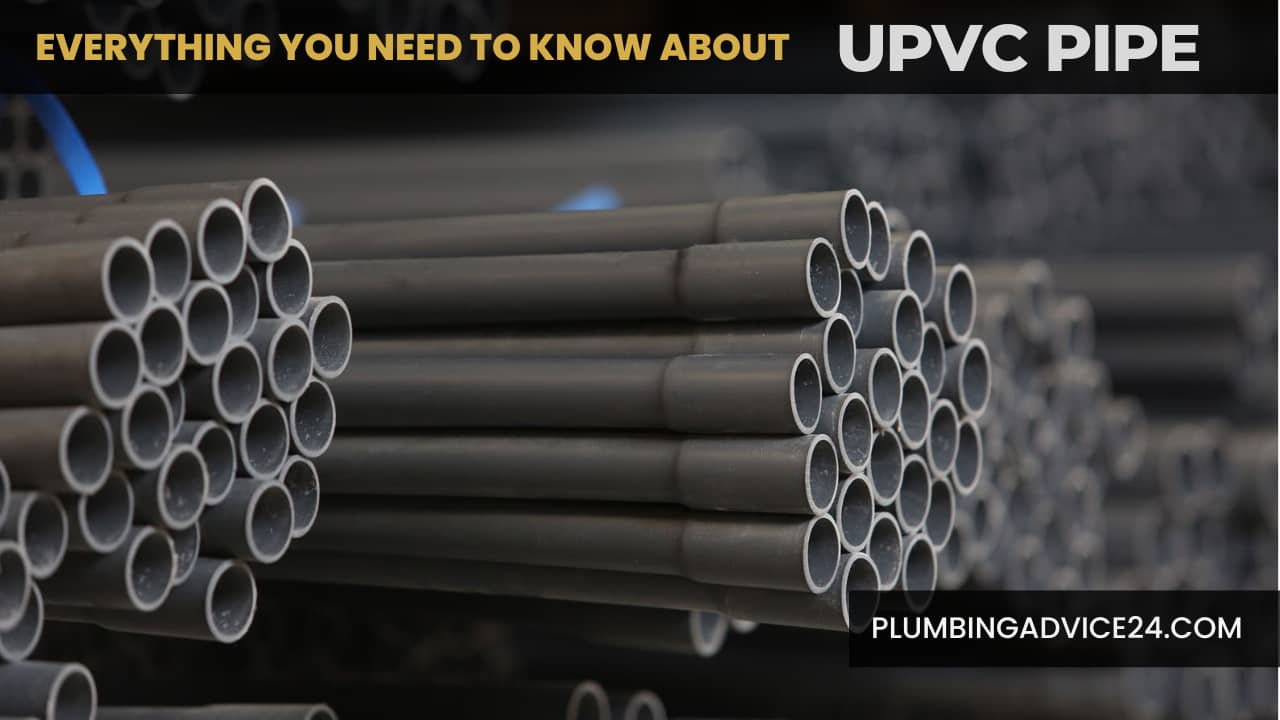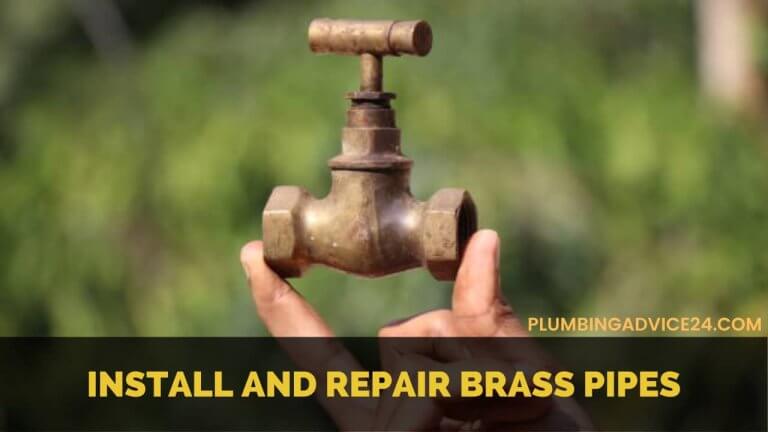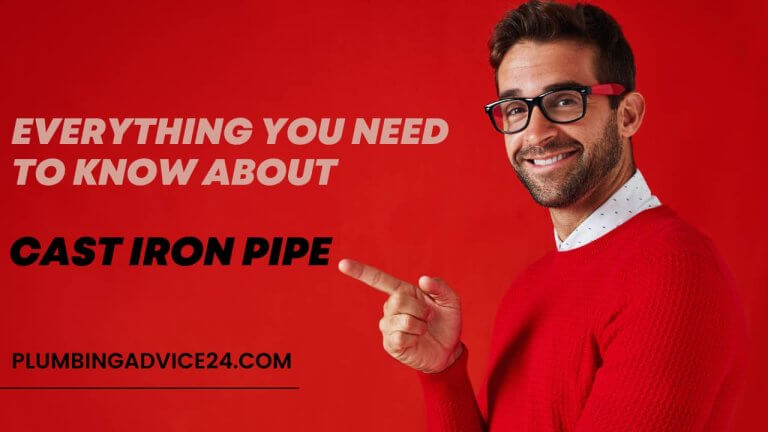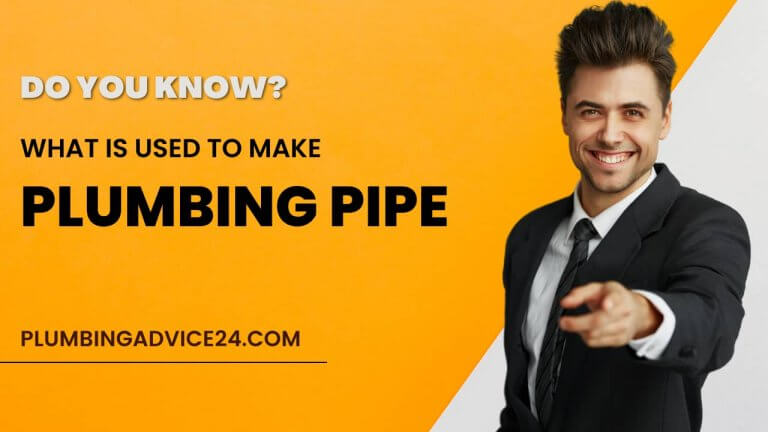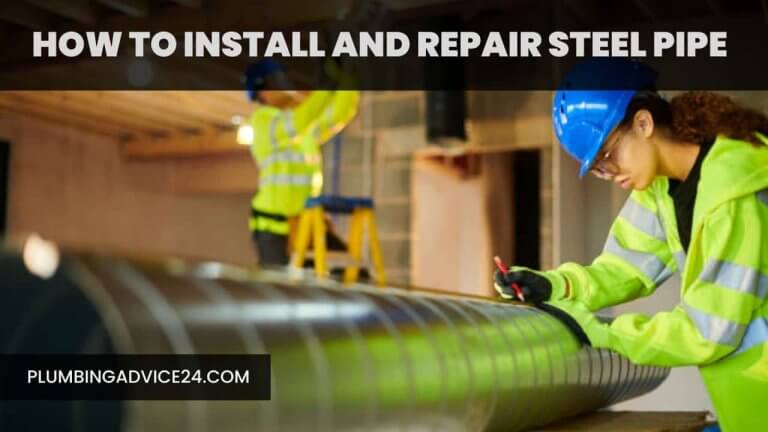Everything About uPVC Pipe
uPVC, or PVC-U, is a thermoplastic material derived from common salt and fossil fuels. Pipe materials have the longest track record of all plastic materials. The first uPVC pipe was manufactured in the 1930s. From the early 1950s, UPVC plumbing pipes were used to replace corroded metal pipes and thereby deliver clean drinking water to the growing rural and later urban populations.
uPVC pipes are certified safe for drinking water according to NSF Standard 61 and are widely used in water distribution and transmission pipelines throughout North America and around the world. uPVC is approved for waste lines in homes and is the most commonly used pipe for sanitary sewers. Let’s know more about uPVC pipes.
What Is uPVC Pipe?
An Unplasticized Polyvinyl Chloride pipe (uPVC pipe) is a rigid type of PVC pipe. With the “u” standing for “unplasticized,” uPVC is a pipe made without plasticizers. This is not additional content; Plasticizers increase plasticity and reduce viscosity, making materials malleable and flexible. uPVC is often called hard plastic.
uPVC pipes are lightweight, inexpensive, easy to handle, non-toxic, and chemical-free, making UPVC pipes the perfect choice for transporting drinking water. It is able to withstand high chemical resistance, mechanical performance, and UV exposure.
uPVC has high chemical resistance over its operating temperature range, with a wide band of operating pressures. A maximum operating temperature of 140 °F (60 °C) and a maximum operating pressure of 450 psi (3,100 kPa) are noted.
Due to its long-term strength characteristics, high rigidity, and cost-effectiveness, uPVC systems account for a large proportion of plastic piping installations, and by some estimates, more than 2,000,000 miles (3,200,000 km) of uPVC pipe are currently in service in all applications.
Also, unplasticized PVC can be completely recycled, so it is considered an environmentally friendly pipe.
How Is uPVC Pipe Manufacturing Process Done?
All pipe manufacturers follow ASTM -D- 1784 standards to manufacture uPVC pipes and fittings, which are rigid and hard in nature. Making uPVC pipe is similar to making PVC pipe; the only difference is the raw material of both.
Filers of modifiers and stabilizers are added to the basic PVC raw material at the time of extrusion as required by the application, while a very negligible percentage of plasticizers are used for the UPVC product (to make the pipe rigid).
The following steps are considered for making uPVC pipes:
- PVC raw materials are made into pellets or powders with a very negligible percentage of plasticizers. These raw material pellets/powders are fed into a uPVC twin screw extruder.
- Melting and heating are then provided in multiple extruder zones.
- The extruding is inserted into a pipe-shaped die to shape it.
- As the material passes through processing equipment downstream of the extruder, it is corrected to correct any asymmetry.
- A pipe of this shape is cooled.
- The uPVC pipe is cut and prepared for use.
uPVC Pipe Lifespan
uPVC pipelines have been used for sewage removal for many decades. However, people believe that uPVC pipelines will have a lifespan of more than 50 years.
Years under most service conditions, no basic evidence is available, nor procedures exist to measure the remaining life of existing systems. Water companies and municipalities were faced with the dilemma of when to replace or restore the pipeline, which has been in service for more than 50 years.
uPVC sewer pipes can serve even more than 100 years under certain conditions, such as no aggressive chemicals being transported in the sewer system and the transport of abrasive particles being limited.
What Is uPVC Pipe Used For?
uPVC plumbing pipes are low-maintenance and low-cost pipes made of unplasticized polyvinyl chloride, widely used for potable water distribution in buildings or for transferring water to bathrooms, kitchens, sinks, laboratories, etc.
Supply through tube wells and overhead tanks to houses, offices, hotels, hospitals, and public places; uPVC pipes are also used for transporting salt water in industries or in industries like sugar, paper, etc.
uPVC Pipes Applications are as follows:
- Water management and potable water services
- Cold water plumbing services
- Tubewell casing and strainer
- Electrical conduits
- Home and Industrial drainage system
- Non-explosive dry material handling- sand, cement, rock, salt plastic compounds.
- Chemical industries
- Brine Lines- Tanning Plant, Ice Rink
- Livestock whey feed pipes
- Coal washing plant
- Brewery Pipelines
- Power station screening plant pipelines.
- Power Station Chlorination Plant
- Saltwater pipes for small boat engine cooling and ballast tanks
- Fume extraction ducts Chilled waterlines for refrigeration and air conditioning plants
- Water aeration plant
- For emergency repair of damaged pipelines
- Irrigation system
- sprinkler system
Must Read : Types of Plumbing Pipes Used in the Home | Types of Pipes for Water Supply
How to Measure uPVC Pipes?
Pipe measurements are calculated on a nominal scale. That is, their measurements are reference frames on true scale measurements.
If you have a caliper, you can measure the “Outer Diameter” of the pipe directly. But if you don’t have a caliper, you should follow the steps below to get the measurement of the uPVC pipe.
Follow the steps below to measure the uPVC pipe:
- Place the pipe on a hard surface with one end facing you.
- Hold a tape measure or ruler to measure the right outer edge of the pipe from its left outer edge. Keep your ruler as level as possible when measuring.
- The measurement found will be the “average OD” of your pipe.
Choose your pipes based on average OD. - After measuring the average OD use the uPVC pipe size chart given below.
Keep in mind this measurement refers to the outer edge of the pipe, not the inner. Depending on the schedule of pipe you need, your internal measurements may fluctuate.
The uPVC pipe size chart in mm and inches are as below:
Schedule 40 uPVC Pipe Dimensions:
Following are the uPVC Sch 40 pipe thickness as Below:
| SCHEDULE 40 UPVC PIPE DIMENSIONS | |||||
| NOMINAL SIZE (inch) | OUTER DIAMETER (mm) | WALL THICKNESS | NOMINAL WEIGHT kg/m | PRESSURE RATING BAR | |
| MIN | MAX | ||||
| 1/2″ | 21.34 | 2.77 | 3.28 | 0.24 | 41 .4 |
| 3/4″ | 26.67 | 2.87 | 3.38 | 0.33 | 33.1 |
| 1″ | 33.40 | 3.38 | 3.89 | 0.48 | 31.0 |
| 1 1/4″ | 42.16 | 3.56 | 4.06 | 0.65 | 25.5 |
| 1 1/2″ | 48.26 | 3.68 | 4.19 | 0.77 | 22.8 |
| 2″ | 60.32 | 3.91 | 4.42 | 1.04 | 19.3 |
| 3″ | 88.90 | 5.49 | 6.15 | 2.14 | 17.9 |
| 4″ | 114.30 | 6.02 | 6.73 | 3.05 | 15.2 |
| 6″ | 168.28 | 7.11 | 7.98 | 5.37 | 12.4 |
| 8″ | 219.08 | 8.18 | 9.20 | 8.11 | 11.0 |
Schedule 80 uPVC Pipe Dimensions:
Following are the uPVC Sch 80 pipe thickness as Below:
| SCHEDULE 80 UPVC PIPE DIMENSIONS | ||||||
| NOMINAL SIZE (inch) | OUTER DIAMETER (mm) | WALL THICKNESS (S) | NOMINAL WEIGHT kg/m | PRESSURE RATING BAR | ||
| MIN | MAX | Thread bar | Unthread bar | |||
| 1/2″ | 21.34 | 3.73 | 4.24 | 0.31 | 29.0 | 58.6 |
| 3/4′” | 26.67 | 3.91 | 4.42 | 0.41 | 23.4 | 47.6 |
| 1″ | 33.40 | 4.55 | 5.08 | 0.60 | 22.1 | 43.4 |
| 1 1/4″ | 42.16 | 4.85 | 5.44 | 0.84 | 17.9 | 35.9 |
| 1 1/2″ | 48.26 | 5.08 | 5.69 | 1.03 | 16.5 | 32.4 |
| 2″ | 60.32 | 5.54 | 6.20 | 1.41 | 13.8 | 27.6 |
| 3″ | 88.90 | 7.62 | 8.53 | 2.88 | 13.1 | 25.5 |
| 4″ | 114.30 | 8.56 | 9.58 | 4.22 | 11.0 | 22.1 |
| 6″ | 168.28 | 10.97 | 12.29 | 8.5 | N.R. | 19.3 |
| 8″ | 219.08 | 12.70 | 14.20 | 12.23 | N.R. | 17.2 |
uPVC Pipe Cost
UPVC is most commonly used in the building industry due to its low-maintenance properties. It is also used as a water supply and drainage system (non-drinkable) in the chemical processing industry, shipbuilding, etc.
uPVC pipe price is $0.30 to $1.99 per linear foot. Schedule 80 uPVC pipe will be significantly more expensive than schedule 40 uPVC pipe.
Advantages of uPVC Pipes
uPVC pipes are used in various applications. They are cost-effective and last longer than any other pipeline material. These pipes neither require high maintenance nor a complicated installation process. uPVC pipelines come with a package of benefits in various application areas, making them preferred by industry professionals worldwide. So let’s know the benefits of uPVC pipes.
The following are the advantages of uPVC pipe:
- Since UPVC pipes have high tensile strength, they do not break easily under pressure. These pipes will not rust or corrode and can last for decades when properly installed.
- UPVC material is completely stable and non-toxic and can withstand temperatures up to 60 °C. These pipes are 100% lead-free, which does not contaminate the water passing through them. uPVC is an ideal material for carrying potable and other types of water.
- UPVC pipes are lightweight and also cost much less than iron pipes. And its transportation cost is also less.
- UPVC pipes are strong and require less maintenance, thus requiring lower operational costs. Since they are not prone to scaling, they do not require frequent cleaning and maintenance, which makes them a cost-effective option.
- UPVC pipes have a smooth inner surface which reduces friction inside the pipe and allows the free and fast flow of water.
- UPVC pipes require only one solvent to provide a 100% leakproof joint. These pipes come in various lengths, so there is no need for excessive joints, which assures you strong and leak-free joints.
- UPVC pipes can also be installed underground and are fire-resistant materials.
- UPVC is recyclable and can be reshaped into new products or pipes at very high temperatures.
Disadvantages of uPVC Pipes
uPVC pipes are not suitable for hot water lines and have been banned for use inside water supply lines for homes in the USA since 2006. As every material has advantages as well as disadvantages, using uPVC pipes also has some disadvantages.
The following are the disadvantages of uPVC pipe:
- UPVC is a very brittle material and can break and split when exposed to shock or stress and cold temperatures, such as in winter. It can absorb water and swell when exposed to rain or snow. UPVC also has a chance of melting and warping in summer.
- UPVC is unplasticized polyvinyl chloride, making it a hard material and difficult to work with.
- UPVC is sensitive to heat and moisture and can crack if not installed properly.
- Although UPVC pipes are cost-effective, they are more expensive than PVC pipes and have less chemical resistance, and require more maintenance than PVC.
What Is uPVC Meaning in Plumbing?
In uPVC plumbing pipe, meaning “u” is “unplasticized,” uPVC is a pipe made without plasticizers. This is not additional content; Plasticizers increase plasticity and reduce viscosity, making materials malleable and flexible. uPVC is often called hard plastic.
How Long Does uPVC Last?
uPVC pipelines will have a lifespan of more than 50 years. Years under most service conditions, no basic evidence is available, nor procedures exist to measure the remaining life of existing systems. Water companies and municipalities were faced with the dilemma of when to replace or restore the pipeline, which has been in service for more than 50 years.
What Is uPVC Full Form?
The full form of UPVC is unplasticized polyvinyl chloride, a rigid form of PVC. “U” stands for “unplasticized” uPVC is a material made without plasticizers. This is not additional content; Plasticizers increase plasticity and reduce viscosity, making materials malleable and flexible. uPVC is also often called hard plastic.
What Is uPVC Made From?
All pipe manufacturers follow ASTM -D- 1784 standards to manufacture uPVC pipes and fittings, which are rigid and hard in nature. Filers of modifiers and stabilizers are added to the basic PVC raw material at the time of extrusion as required by the application, while a very negligible percentage of plasticizers are used for the UPVC product (to make the pipe rigid).
Can We Use uPVC for Drinking Water?
The characteristics of UPVC pipes make them the best choice for drinking and cold water flow. UPVC pipes behave neutrally regardless of the nature of their carrier fluid and because they are completely odorless and tasteless, making them the safest option for drinking water.
Is uPVC Pipe Use for Hot Water?
UPVC is odorless and tasteless, suitable for transporting processed water, wastewater as well as a large number of chemicals. Depending on the system selected, uPVC is suitable for use over a wide range of operating pressures from 0°C to 65°C. But at its high temperature, the uPVC pipe has a chance to melt and deform.
If You Liked This Post? So Share It with Your Friends
Suggested Articles :
- What Is a PVC Pipe | How to Measure PVC Pipe Size | PVC Pipe Installation Cost
- What Is Plumbing Pipe | 22 Different Types of Plumbing pipes
- What Is Pipe Fittings | 12 Types of Pipe Fittings And Their Design
- 15 Different Types of Plumbing Traps | Uses, Design, And Work of Plumbing Traps
- What Is Brass Pipe | What Is Brass Pipe Used For | How to Measure Brass Pipes
- Lead Pipe Poisoning Hazards and Solutions
- Polybutylene Pipe Problems and Their Solution-Complete Guide
